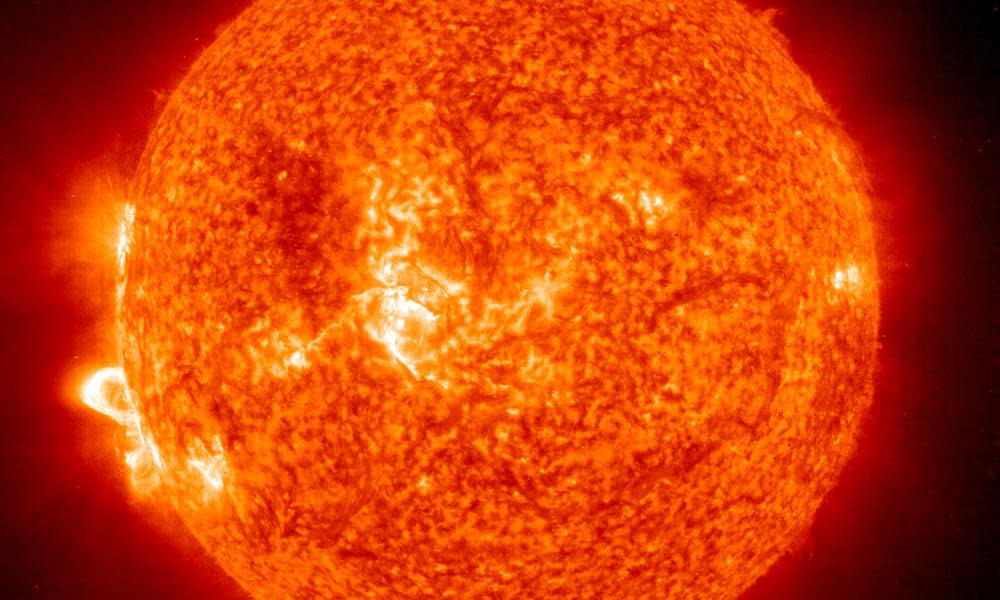How much mass does the W boson have?

Whenever I describe the fundamental forces to an audience that does not entirely consist of other particle physicists (happens more often that you might think), it is the weak force that causes trouble.
Electromagnetism holds atoms together (amongst other fun stuff), the strong force holds atomic nuclei together, and gravity holds the planet together. But what does the weak force do? I am usually reduced to hand-waving about neutrinos and the Sun, in a faintly unconvincing fashion.
In fact the weak force is vital, especially for the Sun.
The carriers of the weak force are the W and the Z bosons, and – crucially – the W boson has an electric charge. This means that protons can transform into neutrons by the emission of a positively-charged W boson; and that in turn means that hydrogen (nucleus = 1 proton) can fuse together to eventually form Helium (nucleus = 2 protons and 2 neutrons). Energy is released in the process, and that keeps the Sun burning.
The mass of the W boson is a key parameter of the Standard Model of particle physics, the framework we use to describe all the fundamental forces and particles1. The mass itself comes from the Brout-Englert-Higgs mechanism, as does the mass of all fundamental particles in the Standard Model. But the W is more intimately intertwined than most with the Higgs boson, the last and crucial particle of the Standard Model discovered in 2012. Because of this, precise measurements of the W mass have a powerful influence on the possible ways the Standard Model might be extended to explain some of the things it misses. Every percentage shaved off the uncertainty consigns more theoretical possibilities to the scrapheap.
The W boson was discovered at CERN in the 1980s at the Super Proton-Antiproton Synchrotron. Its mass was measured at the Large Electron Positron Collider (LEP, LEPII, also at CERN) and the Tevatron proton-antiproton collider at Fermilab. It has recently been measured again at the LHC by ATLAS, the experiment I work on. Here is a pretty straight, no-nonsense video from some of my colleagues explaining about the how and why2.
The answer (combining all the best measurements) is 80.379 ±0.012 GeV, or about 86 times the mass of a hydrogen atom.
So the W and the WWW were both first seen at CERN. Looking up WW, I see the most common acronym is “Weight Watchers”, which is sort of what we’re doing now, I guess. Also, WW scattering (in which two W bosons scatter off each other) is a very important process at the LHC and, on a personal but related note, was the subject of the first paper I wrote on LHC physics.
So: W, WW and WWW. Wonder when we will welcome WWWW?
1Except gravity, but we tend to ignore that.
2The academic paper on this is here.
Jon Butterworth’s latest book A Map of the Invisible: Journeys into Particle Physics is published by Penguin.

 Yahoo News
Yahoo News 
